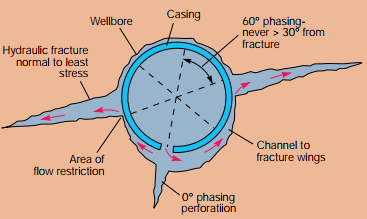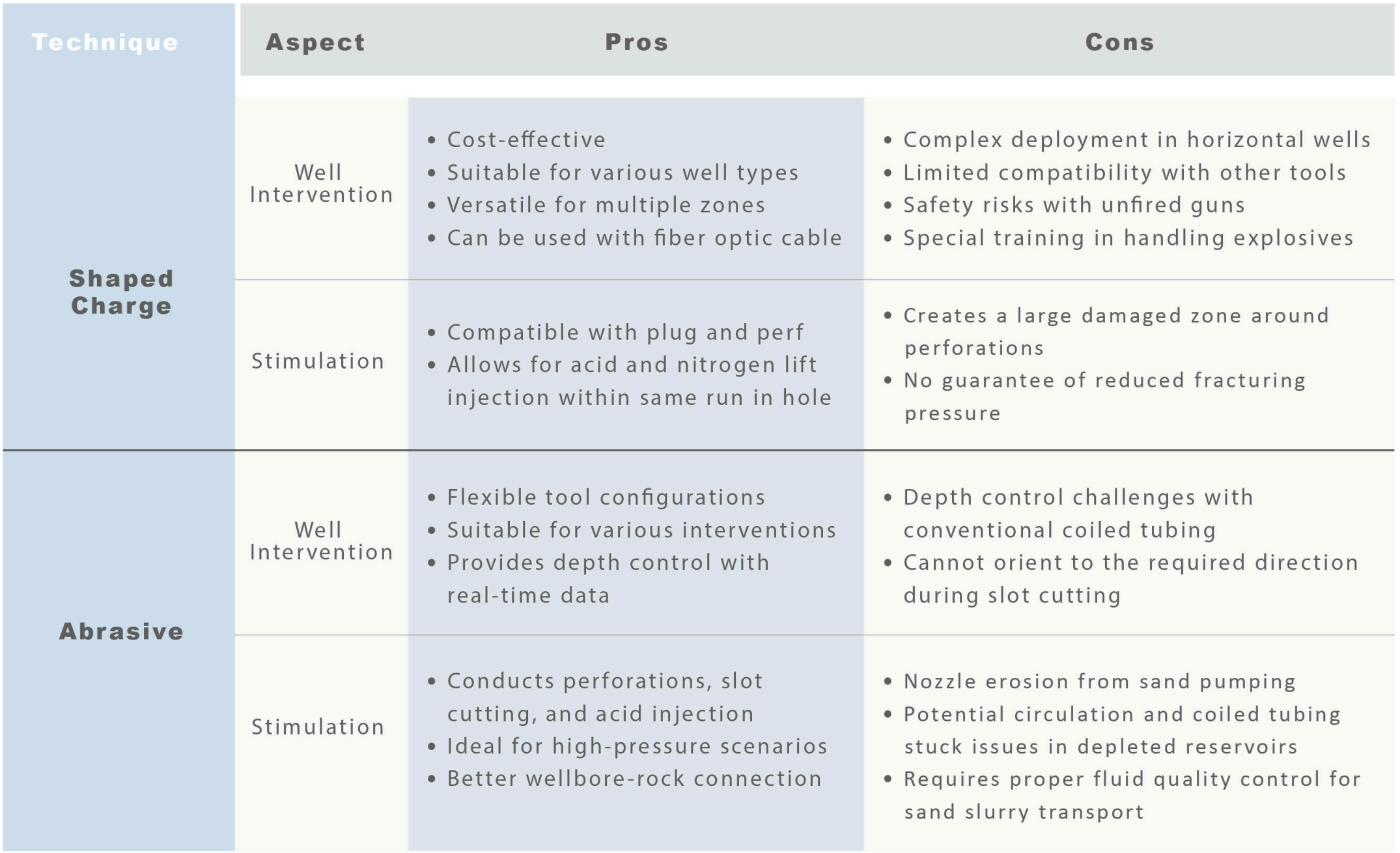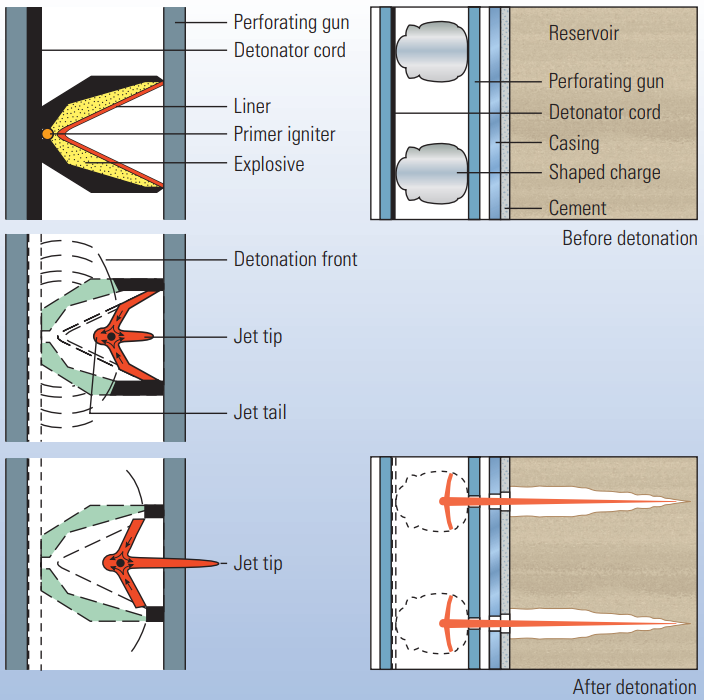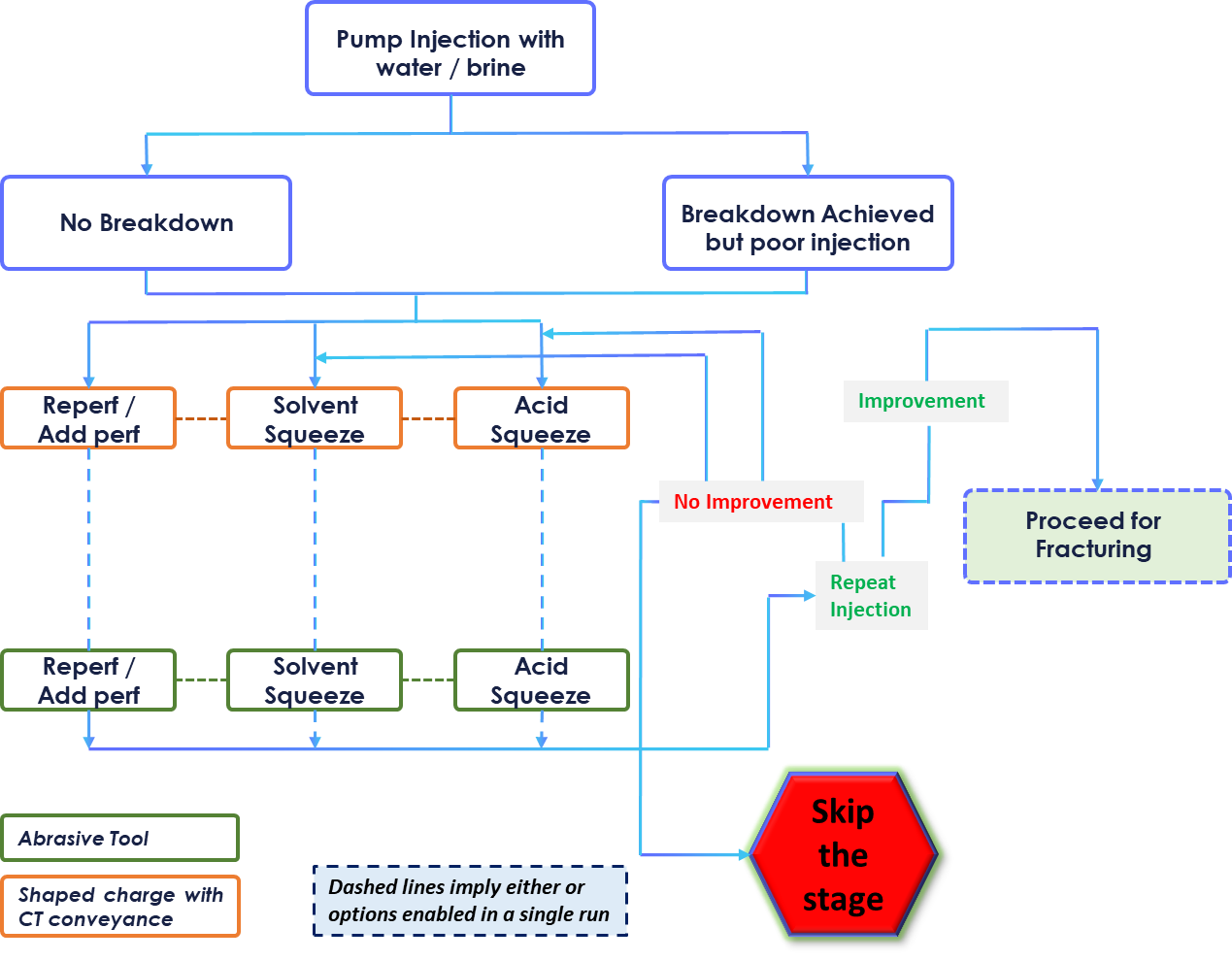By Abdullah Bin Ziad
Well Completion Operations Planning Supervisor, Saudi Aramco

Perforating for stimulation is an essential technique in the oil and gas industry to enhance the production of hydrocarbons from wells. Perforating is the process of creating holes through the well casing and into the surrounding rock formations to establish a path for the oil and gas to flow into the wellbore (Fig. 1). This technique serves to stimulate the well and enhance hydrocarbon production as it increases the connectivity of the reservoir rock and enhances the communication between the reservoir and the wellbore. The success of a perforating operation depends on several factors such as the type of rock formation, the type of perforating technique, the perforation design and workflow, and the wellbore completion design. In this article, we will discuss the various techniques, considerations, challenges, and efficient workflows for perforating. There are several techniques used for perforating for stimulation, which are selected based on the type and depth of the well, type of formation, type of completion, and the required number of perforation holes and density.
The most common technique is the shaped charge deployed in perforating guns. These guns shoot explosive charges into the wellbore and create perforations in the well casing and the surrounding rock formations. Second most common technique is the abrasive technique deployed in abrasive jets. This tool releases high-pressure jets of water or sand to create perforations in the casing and rock formations and is suitable for formations that are hard and difficult to perforate using shaped charges technique.

Top view cross-section of a perforated wellbore
Figure 1
Other techniques include circular notching and hydro-mechanical casing cutter, ranging from classical to more contemporary approaches. Selecting the optimal perforation technique and tool is the role of a perforation design engineer, and that can be accomplished based on the stimulation objective and other previously listed factors. Table-1 summarizes the pros and cons of each technique. Note that well intervention refers to operations that involve using tools or equipment inside the well without the use of rigs. A well intervention can be specifically carried out for perforating for stimulation alone, or it can be coupled with other tools by utilizing an optimized coiled tubing in order to run all tools in a single run-in-hole.

Summary of the benefits and challenges of shaped charge and abrasive techniques for wellbore stimulation
Table 1
It is important to realize how powerful these tools can be. For instance, a shaped charge tool detonation process within a wellbore is illustrated in Figure 2. The detonator cord connects individual shaped charges, and upon detonation, it initiates a chain reaction. In this process, the explosive energy is focused into a high-velocity jet with a tip velocity of approximately 7,000 meters [22,965 feet] per second. This jet generates an immensely powerful pressure wave, exerting pressures as high as 103 gigapascals [15 million PSI]. As depicted in Figure 2, this focused energy is what creates perforation tunnels capable of penetrating through the casing, cement, and the surrounding rock formation. This controlled and precise penetration is a fundamental mechanism in perforating for stimulation to enhance the connectivity between the wellbore and the reservoir.

Side cross-sectional view of a shaped charge detonation tool
Figure 2
Nonetheless, perforating for stimulation does not come without challenges, and one significant challenge is the potential for wellbore damage. Wellbore damage refers to any unintended alterations or disturbances in the wellbore structure that can hinder its integrity and functionality. In the context of perforating, this can occur if the perforating charges create a large hole in the well casing or if the perforating guns are not correctly positioned. A large hole in the casing can compromise the structural integrity of the well, potentially leading to leaks, casing deformation, and the intrusion of unwanted materials into the wellbore. This, in turn, can result in decreased well performance and increased operational risks. It is crucial to note that what is considered a “large hole” can vary depending on the specific well and reservoir conditions, making it essential for engineers and operators to carefully assess the potential risks and take appropriate measures to mitigate them. To address this challenge effectively, it is important to consider various factors, such as casing strength, formation characteristics, and perforation design to ensure that the wellbore remains stable and operational after the perforating operation. Additionally, implementing stringent quality control and monitoring procedures during and after the perforating process can help detect and rectify any issues promptly, minimize the risk of wellbore damage, and ensure the overall success of the stimulation operation. Other challenges include formation damage and equipment failure.
To mitigate these challenges and ensure a proper job, it has become an industry standard to design and follow a workflow for perforating for stimulation that includes the following steps: pre-job planning, perforating gun selection, perforation design, completion design, perforating operation execution, and post-job evaluation. In addition, a decision-making workflow (Fig. 3) can be incorporated to ensure an efficient and successful execution. For instance, in tectonically-influenced basins with horizontal well development, a decision-making workflow can be followed to maximize stimulation efficiency.

Example of a decision-making workflow
Figure 3
Perforating for stimulation is a critical well intervention measure to revitalize wells and increase hydrocarbon production. A successful perforating operation depends on several factors that a perforation design engineer must evaluate such as the type of formation, the objective of the perforation, the techniques and tools selection, the perforation design, and the perforation workflow to name a few. In addition, decision-making workflows offer a clear action plan that accounts for anticipated challenges of a given formation and a straightforward roadmap to ensure smooth execution. If implemented successfully, a well’s life can be elongated and production optimized.

